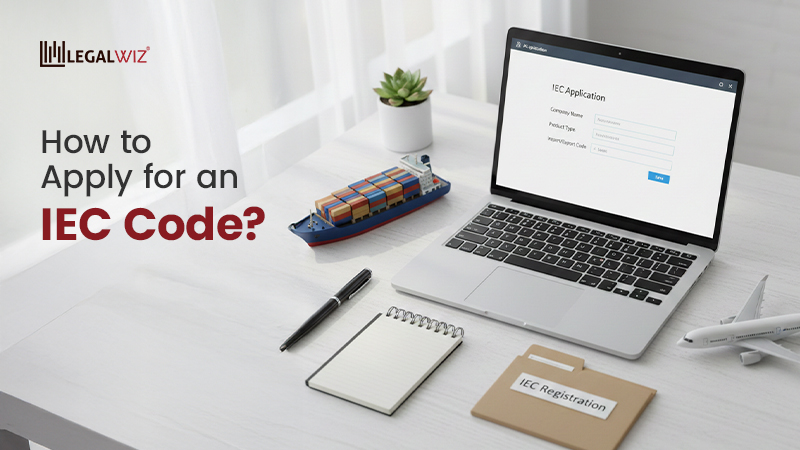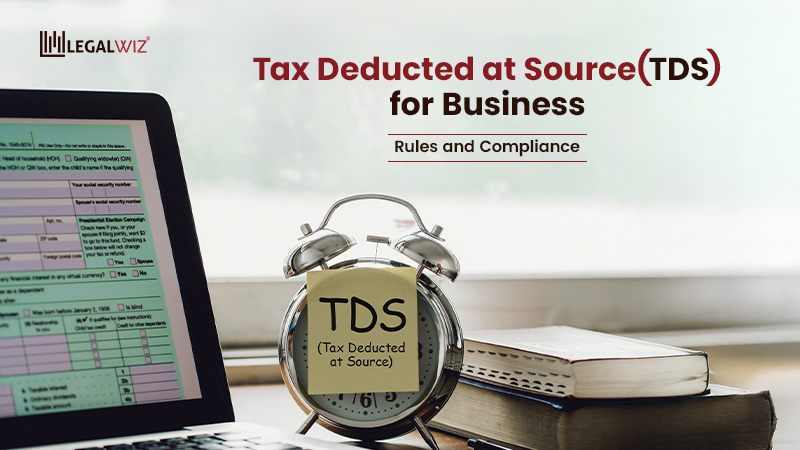Service Level Agreement (SLA): Meaning, Purpose & Types Explained
Businesses rely on many moving parts. Some parts stay inside the company. Others depend on outside help. Whenever a company expects another party to deliver something on time and at a certain quality, it needs a clear written promise. That promise is called an SLA.
In simple terms, SLA meaning in business refers to a written agreement. The purpose of an SLA is to define the scope of services, the metrics for measuring services, and the consequences of non-compliance.
Apart from these major points, other important points related to the service being provided are also a part of any SLA draft. It is easy to get a Service Level Agreement (SLA) Draft online. However, with that said, it is also the responsibility of the parties to have a clear idea of the terms of an SLA.
What is SLA (Service Level Agreement)?
SLA stands for Service Level Agreement in business. It is a signed document between a service provider and a client. It lists the service details, performance standards, quality level, warranty terms, limitations, and the steps to follow if the provider misses the promised service level.
Since it carries legal weight, the SLA gives both sides a clear record of duties. If anything goes wrong, they can check the document and act as per the terms.
Why Service Providers Need an SLA
As outsourcing grew, especially with the rise of IT services in India during the 1980s, SLAs became a standard part of commercial contracts. Today, they are widely used by:
- Network service providers
- IT service companies
- Managed service operators
- Cloud computing providers
- Internet service providers
If you are setting up a SaaS based company or already running one without a proper agreement in place, this is the right moment to fix it. A well-drafted software application development agreement sets the rules, protects your code, and keeps both sides aligned. Learn more about the agreement here: What is a Software Development Agreement?
These businesses usually rely on two key documents to define their relationship with clients.
Master Service Agreement (MSA):
The MSA lays out the general rules, scope, responsibilities, and basic terms that apply to all services. It acts as the foundation of the relationship.
If you want to set up a strong long-term relationship between a vendor and a business, explore our detailed blog on MSA: All you need to know about a Master Service Agreement
Service Level Agreement (SLA):
The SLA builds on the MSA by setting specific service standards, performance metrics, and quality expectations for each service. While the MSA covers the big picture, the SLA focuses on the exact service levels that the provider promises to meet.
Now, let’s move on to understand what SLA consists and how it can help you.
Key Clauses of a Service Level Agreement
A strong SLA has many small pieces that work together. Each piece helps prevent confusion later. Here are the major parts that every SLA must include.
1. Overview
This section lists basic details. It includes the names of both parties, the date, the period for which the agreement stays valid, and any general notes.
2. Services
This section lists everything the provider will deliver. It explains the type of service, the time required, and the cost. If the service has different stages, those stages must also be listed.
3. Metrics
Metrics describe how performance will be measured. These measurements must be clear and simple. They help the customer check whether the provider has met the promised level. They also help the provider show proof of good service.
4. Support
This records the support process. It lists contact persons, support numbers, and the steps to raise complaints.
5. Dispute Resolution
If a dispute arises, the SLA must provide a method to solve it. This includes the process, the officer in charge, and the maximum time allowed before action is taken.
6. Non-competition
When the duties of the service provider as integral to the essence of your business, you’d like to take certain extra measures to protect your rights. Having a non-compete clause or a separate non-compete agreement will help you in taking measures if the service provider starts a competing trade for someone else.
Want to understand what a non-compete agreement is and how it can help you? We have a detailed blog that covers everything you need to know about non-compete agreements: Know All About Non Compete Agreement
7. Penalty
If the provider fails to meet the service level, this section lists the penalty. The penalty may be a fee, a refund, a service credit, or another corrective step.
Types of Service Level Agreements
SLAs do not come in a single format. Different situations need different structures.
1. External Service Agreement or Customer Service Agreement
This SLA is created for one specific customer and bundles all the services they need into a single contract. It outlines the exact service scope, quality standards, and support terms for that individual client.
Example: A café signs an SLA with its internet provider for specific speed, uptime, and response time.
2. Internal SLA (Service–Level Agreement)
This SLA covers one uniform service that is delivered the same way to all customers. Since the service does not change from user to user, it is easier for vendors to manage and maintain.
Example: If Company XYZ’s marketing team must send 500 organic leads to sales each month, both teams can set an internal SLA to fix this target.
3. Multi-level Service Agreements
This SLA is used when the provider offers services at different levels. A multi-level SLA allows organisations to structure service commitments across different layers. It is useful when various departments, teams, or user groups have different requirements but still operate under one broad agreement.
It includes three layers:
- Corporate level: Covers organisation-wide rules and policies that stay consistent for all users. These terms rarely need updates.
- Customer level: Sets conditions for a specific customer group within the organisation. For example, a company using one security agency may request stricter security only for its finance department due to higher risk.
- Service level: Defines the terms for a particular service, including performance standards and support requirements, for that customer group.
Learn how to draft a vendor agreement, understand its format, explore the different types, and know what must be included: Vendor Agreement: Format and Applicability
Importance of a Service Level Agreement
An SLA plays an important role for both the provider and the client. It protects both sides from disputes and sets a clear path for working together.
Why it matters for both parties
- Clear Guidelines: Every term is written. If an issue appears, either side can point to the document.
- Predefined Quality: Metrics are defined in advance. This avoids arguments over what qualifies as “good service”.
- Alternative Solution: If something goes wrong, the SLA lists the next steps. This saves time and prevents confusion.
- Transparency About Parties: Both sides know who they are dealing with. The roles and responsibilities stay clear.
- Timeline: The SLA records the timeline for addressing problems, delivering service, and resolving complaints.
- Disclaimer: Certain services may not be included. The SLA lists these exceptions so that the provider is not blamed for tasks outside their scope.
- Defined Liability: The provider can show the SLA if the customer demands something that is not part of the agreement.
How to Set Metrics in an SLA
Metrics depend on the type of service. They must be measurable and easy to track. They must also be written in a way that a customer can understand without extra help.
Here are the common metrics used in most SLAs.
1. Service Availability
This measures how often the service is available. For example, many cloud providers promise 99 percent uptime.
2. Error Rates
This measures the frequency of errors and the plan for fixing them. The SLA may also list acceptable error limits.
3. Technical Advancement
This explains the technology used by the provider. It may also list update schedules or ongoing improvements.
4. Confidentiality
This describes how the provider will protect client data. It may cover security steps and storage standards. To prevent any breach of confidentiality, it helps to understand what a non-disclosure agreement is and to draft one that keeps your information secure.
5. Results
This section records successful past performance. It helps build trust with the customer.
Examples of Service Level Agreements
The structure of an SLA changes based on the service being offered. A few examples show how varied these documents can be.
Example 1: Internet Provider
An internet provider signs separate SLAs for companies and individuals. A company may need guaranteed uptime and high-speed backup lines. An individual may need a simple connection for home use. Both SLAs differ because their needs differ.
Example 2: Insurance Company
A company buying insurance may receive a detailed SLA that explains corporate terms. The same insurance company also sells policies online to individuals, and that service comes with a standard SLA. The customer gets the same terms unless they request a customised policy.
Conclusion
Understanding SLA meaning in business helps companies protect themselves from service disputes. It also helps customers know what they are paying for. A well-written SLA reduces arguments, builds trust, and keeps projects on track. Clear documentation supports both sides, whether the service involves digital tools, raw materials, or support operations.
For businesses that want reliable contracts without unnecessary complexity, our experts at LegalWiz.in ensure that the drafting of a Service Level Agreement is easier. The team helps companies create service agreements that match real-world needs and follow proper legal standards. If a business depends on smooth operations, an SLA is not a luxury. It is a necessity.
Frequently Asked Questions
What is a Service Level Agreement?
A Service Level Agreement is a written document that defines the service scope, performance standards, responsibilities, and remedies if the promised service level is not met.
Why do businesses need an SLA?
An SLA prevents confusion by setting clear expectations. It records timelines, quality benchmarks, and support steps, which helps both sides avoid disputes.
How is an SLA different from an MSA?
An MSA explains the overall relationship between the parties. An SLA focuses on specific service levels and measurable performance targets under that broader relationship.
What should an SLA include?
A strong SLA covers service details, metrics, support process, dispute resolution, confidentiality standards, and penalties for non-performance.
What happens if the provider fails to meet the SLA?
The SLA will list the next steps, such as penalties, corrective actions, refunds, or service credits, depending on what the parties agreed.
Can an SLA be updated after signing?
Yes. SLAs can be revised to reflect new services, technology changes, or updated expectations, provided both parties agree to the changes.

Sapna Mane
Sapna Mane is a skilled content writer at LegalWiz.in with years of cross-industry experience and a flair for turning legal, tax, and compliance chaos into clear, scroll-stopping content. She makes sense of India’s ever-changing rules—so you don’t have to Google everything twice.







